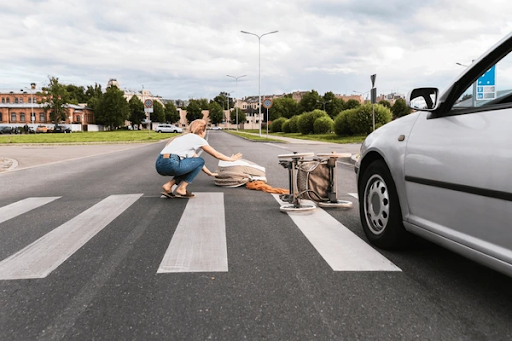Pedestrian safety is a critical issue for everyone on the road. Common causes of accidents include distracted driving and failure to yield. This article highlights the importance of pedestrian safety, common accident causes, and practical safety tips. It also explores measures drivers, cities, and communities can implement to create safer pedestrian environments and how individuals can promote pedestrian safety.
Why Is Pedestrian Safety Important?
Pedestrian safety is crucial for reducing injuries and deaths from traffic crashes. With pedestrian deaths on the rise, as reported by the Governors Highway Safety Association, it’s essential to implement adequate safety measures to protect pedestrians.
What Are the Common Causes of Pedestrian Accidents?
Understanding the causes of pedestrian accidents is crucial for implementing effective safety measures to reduce injuries and fatalities. Distracted driving, primarily due to cell phone use, poses a significant risk by diverting drivers’ attention away from the road, significantly endangering vulnerable pedestrians.
Strict laws and public awareness campaigns are essential to discourage this behavior and promote safer driving habits. Failure to yield at crosswalks and intersections is another common cause of accidents, emphasizing the importance of drivers being vigilant and respecting pedestrians’ right-of-way.
Driving under the influence of alcohol or drugs drastically increases the likelihood of fatal crashes involving pedestrians, highlighting the need for stringent enforcement and awareness campaigns to promote sober driving.
Additionally, poor visibility, particularly at night, underscores the importance of reflective clothing and traffic signals in enhancing pedestrian safety and preventing accidents on the road.
How Can Pedestrians Stay Safe?
- Use Designated Crosswalks: Designated crosswalks are crucial for pedestrian safety. They provide clear right-of-way and enhance visibility for both pedestrians and drivers. By adhering to traffic signals and safety guidelines, pedestrians can safely navigate intersections and reduce the risk of accidents.
- Pay Attention to Traffic Signals: Pedestrians should always follow traffic signals to ensure safe crossing at intersections. Waiting for walk signals and respecting traffic lights helps maintain order and prevent accidents, promoting safer road conditions for everyone.
- Make Eye Contact with Drivers: Establishing eye contact with drivers before crossing intersections enhances pedestrian safety by ensuring mutual awareness. This simple action helps prevent misunderstandings and promotes safer interactions between pedestrians and drivers.
- Wear Reflective Clothing at Night: Wearing reflective clothing in low-light conditions significantly improves pedestrian visibility, reducing the risk of accidents. Alongside reflective gear, using additional lighting and sticking to well-lit areas enhances safety during nighttime walks.
- Avoid Distractions: Avoiding distractions such as cell phones while walking is essential to stay aware of surroundings and reduce accident risks. Pedestrians should prioritize attentiveness and minimize distractions to enhance their safety on the road.
- Walk-Facing Traffic: Walking against traffic flow allows pedestrians to maintain visibility and react defensively to oncoming vehicles. This practice and other safety measures, like using designated crosswalks and making eye contact with drivers, promote safer pedestrian journeys.
What Are Some Safety Tips for Drivers?
- Always Yield to Pedestrians: Drivers must always yield to pedestrians at crosswalks and intersections to ensure their safety and adhere to legal obligations. Respecting pedestrian right-of-way enhances road safety and fosters mutual respect between drivers and pedestrians, promoting harmonious coexistence on the road. Drivers must remain vigilant near marked crosswalks, schools, parks, and shopping centers to prioritize pedestrian safety and prevent accidents.
- Obey Speed Limits: Adhering to speed limits, especially in school zones, is essential to protect pedestrians and comply with traffic laws. Speed limits are designed to create safe environments for all road users, and exceeding them increases the risk of accidents, severe injuries, and fatalities. Drivers should maintain awareness of their surroundings, follow posted speed limits, and adjust their speed according to road conditions and pedestrian traffic to create a safer road environment.
- Avoid Distractions: Preventing distractions, such as using cell phones while driving, is critical for reducing traffic crashes and ensuring pedestrian safety. Distracted driving significantly heightens the risk of accidents and fatalities, necessitating drivers to prioritize safety by avoiding distractions and utilizing hands-free options for calls and navigation. Staying focused on the road helps drivers maintain vigilance and react promptly to potential hazards, enhancing road safety.
- Use Extra Caution in School Zones: Drivers should exercise heightened caution in school zones to protect children’s safety and adhere to traffic regulations. Decreasing speeds and remaining alert are essential when driving through school zones, where children may cross the street or present near the roadway. Drivers should watch for school zone signals, patrols, and crossing pedestrians, always yielding as necessary to create a safer environment and promote responsible driving practices in school areas.
What Are Some Safety Measures for Cities and Communities?
Implementing effective safety measures at the city and community level is crucial for enhancing pedestrian safety and reducing accidents.
Cities and communities can install crosswalks and traffic signals at key intersections to protect pedestrians, regulate traffic flow, improve safety, and manage vehicle movement.
Traffic calming measures like speed bumps and roundabouts further enhance safety by slowing down drivers and promoting adherence to traffic laws. Adequate lighting in high pedestrian traffic areas is essential for visibility and accident prevention, contributing to a safer environment overall.
Educational efforts, such as those promoted by initiatives like 1-800-ASK-GARY through awareness campaigns and enforcement, also significantly promote safe walking practices and reduce incidents involving pedestrians.












